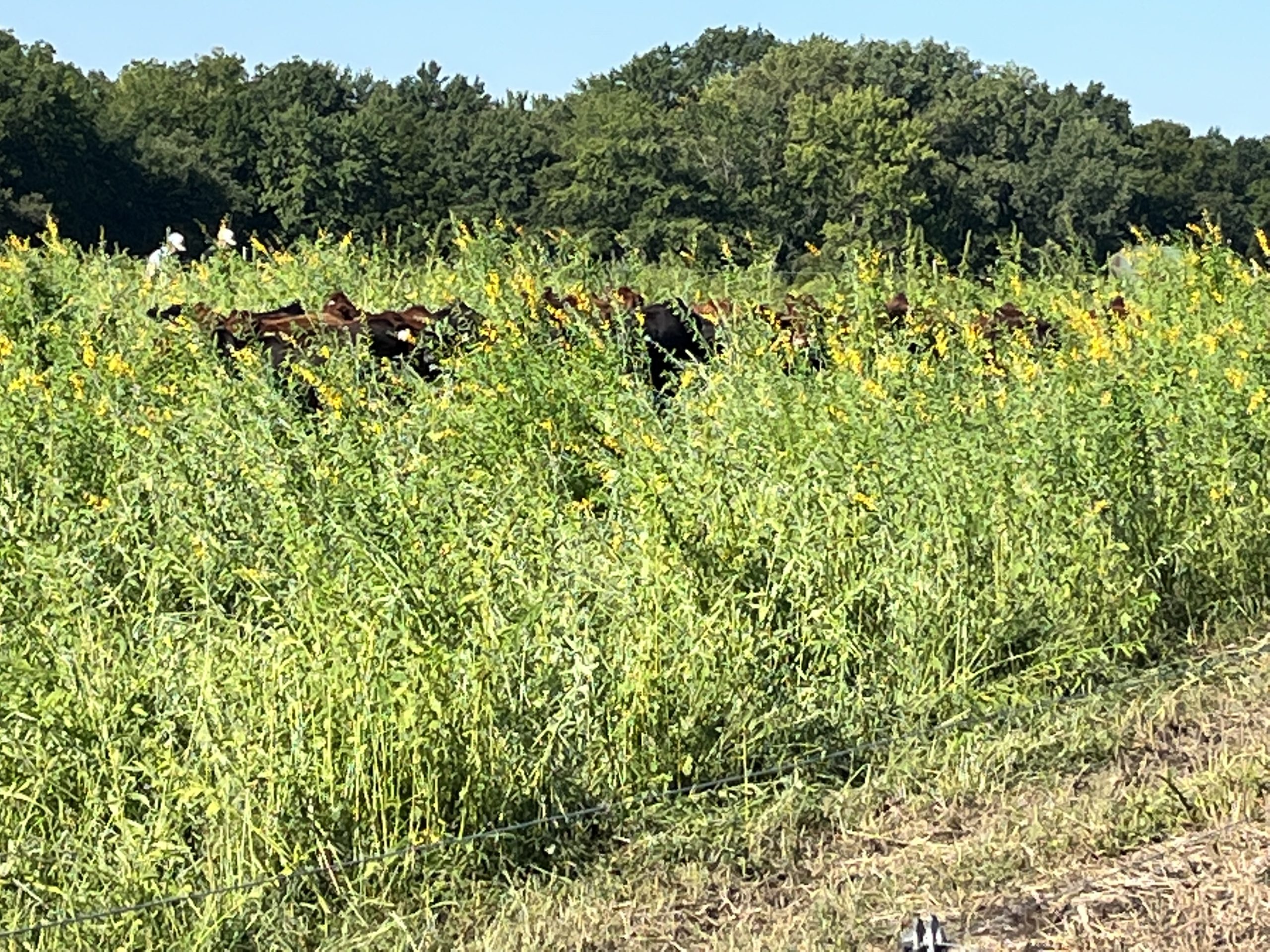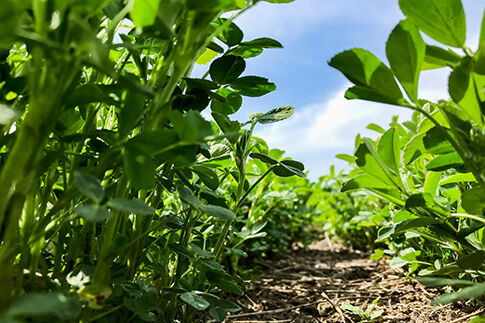Frequent droughts in Missouri have livestock producers discussing more adaptable summer pasture options.
“With tall fescue as the dominant Missouri forage, there are few options to enhance those fescue fields to graze through a long, hot, dry spell,” said Tim Schnakenberg, University of Missouri Extension agronomy field specialist.
MU researchers have extensively evaluated sunn hemp as an option. Sunn hemp is a summer annual legume growing as tall as 6 feet, producing a large cluster of nutritious leaves from a single stem. Some summer annual forages will drop seed and come back the next year. But sunn hemp will not survive Missouri conditions even if it has a chance to produce seed, Schnakenberg said.
“Most of the time, we will not have enough time in our growing season to produce a seed crop, which is OK for us since the seeds are toxic to cattle,” he said. “No survivable seed means this crop must be planted each year if it is used as an ongoing forage option.”
Sunn hemp can be grown alone, combined with other summer cover crop forages in a mix or inter-seeded into tall fescue stands. Most research in Missouri has focused on inter-seeding. Compared to a legume like alfalfa, sunn hemp doesn’t require super high fertility to be established and productive. It also is a non-bloating legume with a rapid growth rate and high potential for regrowth following a grazing. It is excellent for diluting the toxicity of endophyte-infected Kentucky 31 fescue stands.
One benefit of introducing sunn hemp to complement a tall fescue stand is shade for the cool-season forage during the most brutal time of summer. In extreme situations, the fescue goes semi-dormant in drought. But with the shade of a bushy forage towering over the stand, the fescue is protected and better preserved. Cattle benefit from both the grass below and the higher-quality legume leaves above.
“The cost of the seed can be offset by the fact that it has been confirmed by Dr. Harley Naumann at the University of Missouri to produce as much as 40 pounds of usable nitrogen per acre each year for the grass crop it is growing in,” Schnakenberg said. “The protein level for the whole plant in Naumann’s studies has been as high as 17% 35 days after planting.” Naumann has found leaf samples to test as high as 25% during the same time period.
In a recent MU Extension study evaluating sunn hemp grazing by late-gestation cows, season-long sunn hemp accumulation reached 4,400 pounds per acre. Naumann and livestock specialist Chrisee Wheeler conducted the study at the MU Wurdack Extension and Education Center.
Establishing sunn hemp in tall fescue should not start early. This forage prefers to germinate in soils that are around 70 F, so it’s often established in early June in Missouri. Generally, the recommendation is to plant 25-30 pounds (pure live seed) per acre either by no-till or broadcast following a fescue hay harvest or grazing. No-till will produce the more consistent stands. Most of the growth occurs between 30 and 60 days after planting.
Once sunn hemp reaches about 1.5 to 3 feet tall, about 45 days after planting, it’s a good time to begin grazing by cattle, sheep or goats. Early grazing is important to ensure good forage quality for the season. Graze down to about 10-12 inches in the stalk before turning out of the field. Cows often will graze on their own down to about 10-12 inches minimum. Often, a 21-day rest period is the most beneficial grazing strategy for the health of the plant.
Another trait observed during sunn hemp grazing is its ability to regrow very well at the area of the stalk it was last grazed down to. Instead of the stalk growing upward like the original growth, it begins to branch at hidden axillary buds, causing a bushier plant with plenty of nutritious leaves for the next grazing.
“Naumann has also been experimenting with using sunn hemp as a late-summer hay source,” Schnakenberg said. “Traditionally, agronomists have discouraged its use for hay due to the woody stems, but Naumann has found the quality of the forage in a bale is better than expected. It’s best to make hay late in the summer or early fall so that there will be no need for high cutting for the benefit of having regrowth. There is more work planned on this.”
First frost will end the growing season of sunn hemp. Leaves will drop off and the stems will be all that is left. Pastures will look ragged by early winter due to the dead stems, but it will be just in time for the fescue below to continue building growth for winter stockpile.
For more information on using sunn hemp in a grazing system, contact your local MU Extension agronomy specialist.
PHOTO: Cows grazing sunn hemp at MU Greenley Research Farm in northeastern Missouri. Photo by Harley Naumann.


